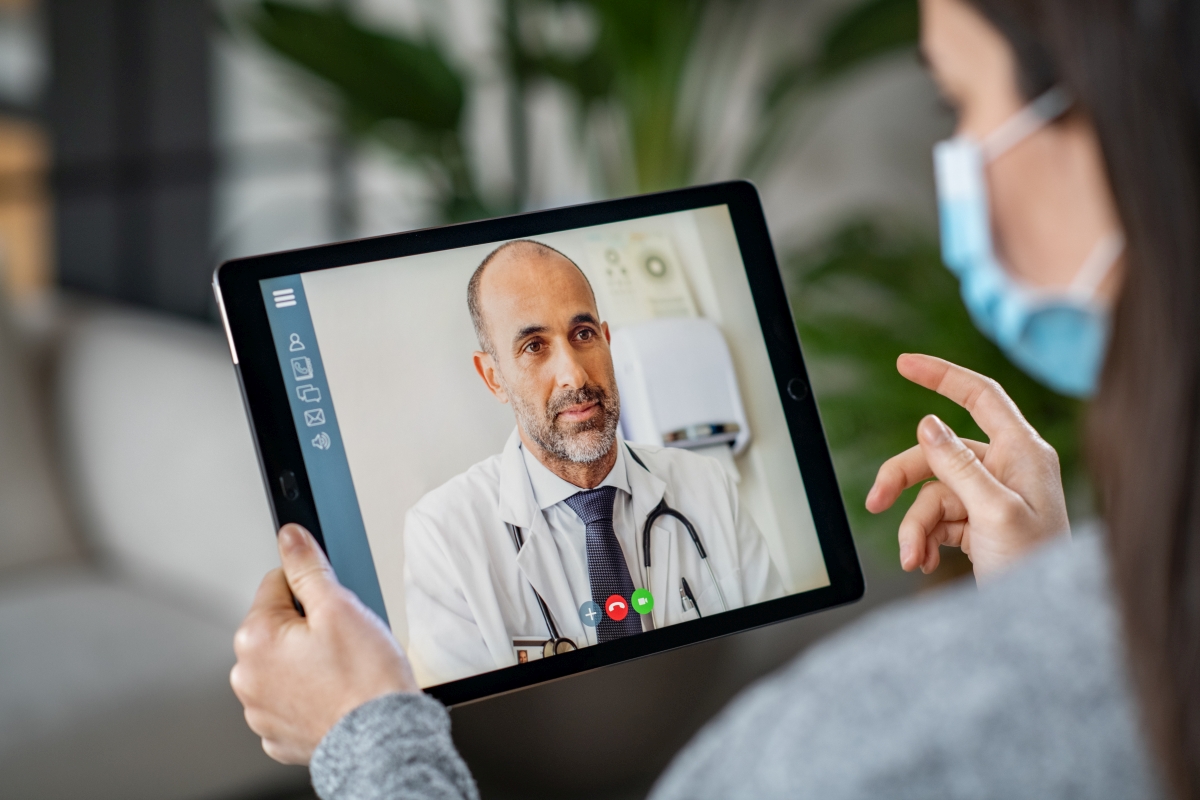Top Teledoctors Services for Convenient Online Healthcare
Top Teledoctors Services for Convenient Online Healthcare
Blog Article
Teledoctors: Connecting the Gap In Between Patients and Doctor
The introduction of teledoctors represents a considerable change in the medical care landscape, using services to long-standing accessibility issues faced by patients and providers alike. By incorporating telemedicine into traditional methods, health care systems can get to remote and underserved populaces, supplying essential clinical assessments without the obstacles of distance and traveling. This paradigm change not just boosts person interaction yet likewise optimizes source allocation for carriers. Nevertheless, the prevalent adoption of teledoctors elevates essential inquiries regarding the sustainability of such techniques and the implications for future medical care delivery. What difficulties exist ahead in guaranteeing this version's effectiveness and equity?
Rise of Telemedicine

The increase of telemedicine is additionally sustained by the requirement for affordable healthcare. Healthcare systems globally are under stress to minimize expenses while preserving high quality treatment, and telemedicine offers a practical service. By minimizing the need for physical check outs, telemedicine lowers overhanging expenses for healthcare centers and eventually lowers the economic problem on clients.
Additionally, the COVID-19 pandemic acted as a stimulant, increasing the fostering of telemedicine practices. Social distancing actions and the requirement to reduce direct exposure danger necessitated a change towards remote consultations, motivating regulative bodies to adapt and sustain telehealth services. This change has not only tried and tested telemedicine's effectiveness but additionally its potential to develop as a staple component of modern-day health care systems.
Advantages for Clients
Mainly, telemedicine boosts availability, allowing patients in underserved or remote locations to consult health care companies without the demand for extensive traveling. Telemedicine additionally offers patients the convenience of receiving medical advice and therapy from the convenience of their homes, lowering the time and price linked with taking a trip to a medical care center.
Additionally, telemedicine sustains continuity of care by helping with normal follow-ups and surveillance, which are crucial for taking care of persistent conditions. Patients can easily set up consultations and gain access to health care services outside traditional office hours, suiting their busy way of livings. This versatility leads to boosted client involvement and adherence to treatment strategies, potentially causing much better health results.
Additionally, telemedicine can assist mitigate the danger of infection transmission, a concern enhanced by the COVID-19 pandemic. By reducing the need for in-person visits, clients can avoid jampacked waiting spaces and lower direct exposure to contagious ailments. Eventually, telemedicine encourages clients by providing prompt, efficient, and customized healthcare solutions.
Advantages for Providers
For medical care service providers, telemedicine supplies considerable advantages that improve the efficiency and reach of their method. By leveraging electronic technology, suppliers can expand their services to a broader market, consisting of those in underserved or remote locations. This not only minimizes geographical obstacles yet additionally maximizes patient retention and acquisition by making health care extra available.
With telemedicine, the need for physical space decreases, enabling carriers to conserve on actual estate and functional expenditures. This adaptability can lead to enhanced person consultations per i was reading this day, thus boosting revenue potential.
Telemedicine additionally fosters a more collaborative setting for doctor. teledoctors. It enables smooth sharing of person details amongst specialists, improving analysis precision and treatment outcomes. Furthermore, electronic systems can incorporate with electronic health documents (EHRs), improving data accuracy and simplifying management tasks
Moreover, telemedicine boosts patient satisfaction, which is important for company credibility and success. By offering hassle-free and timely treatment, suppliers can improve individual loyalty and involvement, better enhancing the provider-patient partnership.
Overcoming Obstacles
While telemedicine uses countless advantages for healthcare suppliers, it additionally presents challenges that need cautious factor to consider. Medical care service providers need to stick to rigorous regulations like HIPAA to protect sensitive info, consequently needing financial investment in safe and secure systems and recurring staff training. teledoctors.
Another challenge is the digital divide, which can visit this site right here hinder access to telemedicine services. Not all individuals have equivalent accessibility to the required innovation or net connection, specifically those in country or underserved locations. This difference can aggravate existing medical care inequalities, making it vital for carriers to discover different options, such as collaborations with neighborhood organizations, to connect this gap.
Additionally, there are limitations in conducting health examinations remotely. Specific problems require in-person assessment, highlighting the need for a crossbreed version that integrates telemedicine with conventional gos to. When telemedicine is proper and guaranteeing smooth changes between virtual and in-person treatment., service providers must browse these difficulties by developing methods to determine.
Future of Medical Care
The future of healthcare is positioned for a transformative advancement, driven by the fast assimilation of modern technology and advancement. This not only improves patient ease yet additionally increases access to medical care, specifically in rural and underserved locations.
Expert system (AI) and machine understanding are additionally readied to play pivotal roles. These technologies can examine vast quantities of data, supplying anticipating insights into client wellness, boosting analysis accuracy, and customizing treatment plans. AI-driven tools can enhance doctor' capabilities, resulting in more enlightened decision-making and far better person end results.
In addition, wearable innovation and Internet of Medical Things (IoMT) tools are reinventing person engagement and proactive wellness monitoring. These tools make it possible for continuous health tracking, enabling very early discovery of prospective issues and timely treatments.
As these modern technologies remain to advancement, they guarantee to develop an extra efficient, obtainable, and patient-centric medical care system, ultimately linking the void in between individuals and doctor. - teledoctors
Final Thought
Teledoctors are changing healthcare by dramatically improving access and performance through remote examinations. This advancement sustains patients in underserved locations by giving prompt clinical advice without calling for physical check outs, hence boosting patient interaction and continuity of care. Medical care providers profit from much more effective time administration and improved collaboration opportunities. Regardless of challenges such as regulatory This Site issues and technical barriers, the future of healthcare appears efficient and increasingly inclusive because of the integration of telemedicine into conventional care designs.

As telemedicine proceeds to improve healthcare delivery, patients stand to get considerably from this improvement. Primarily, telemedicine improves accessibility, permitting clients in remote or underserved areas to seek advice from health care companies without the demand for considerable traveling. Telemedicine also supplies clients the benefit of getting clinical guidance and treatment from the convenience of their homes, lowering the time and expense associated with taking a trip to a medical care facility.
Eventually, telemedicine empowers clients by offering prompt, reliable, and individualized healthcare solutions.
Report this page